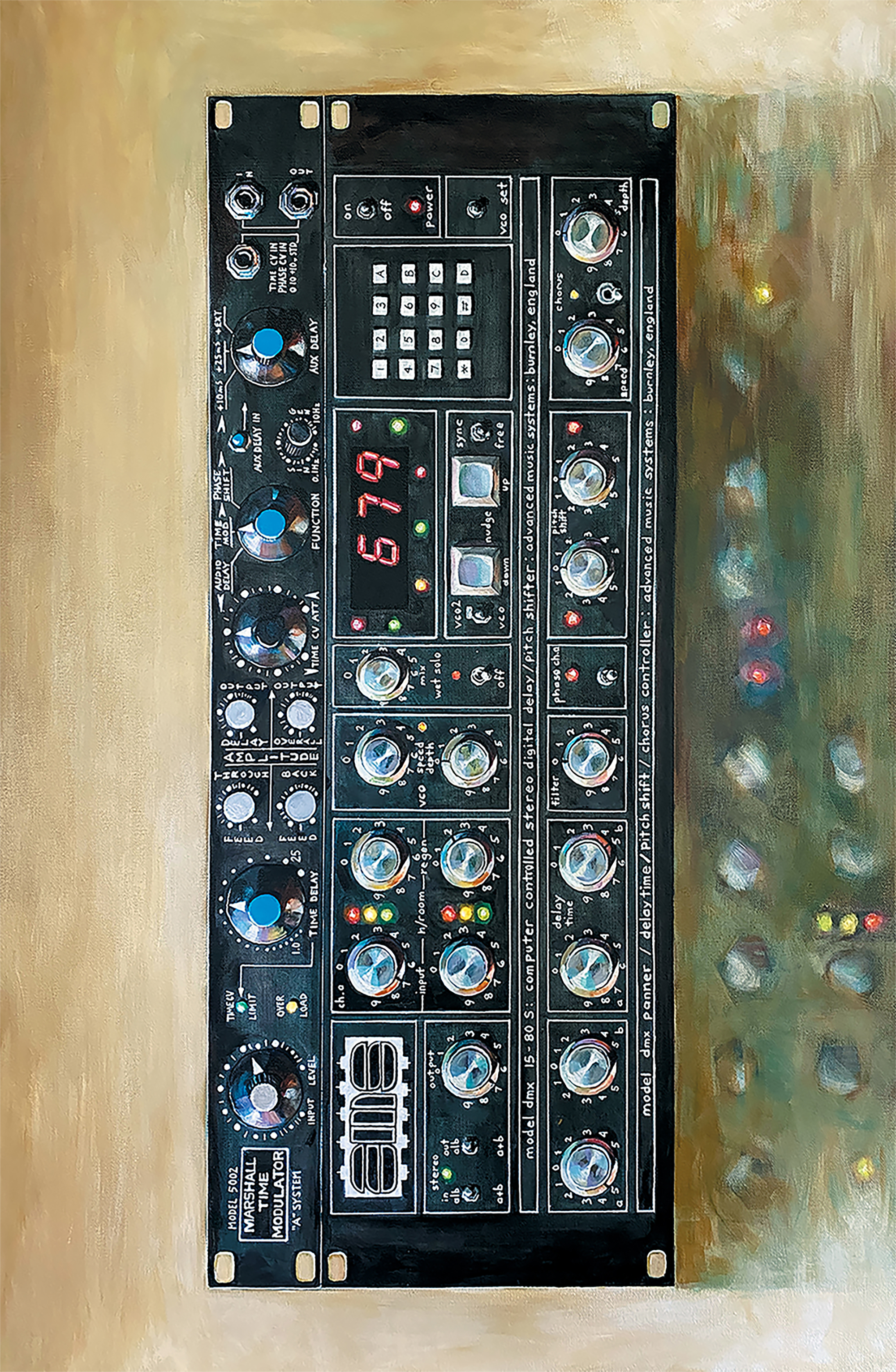The original Telefunken ELA M 251 tube-powered condenser mics were made for Telefunken by AKG in the early '60s – when Neumann had pulled their U 47 distribution from Telefunken – and were somewhat similar (circuit and component-wise) to AKG's popular C12 mics of the time. The 251 has long been regarded by many engineers as one of the greatest mics ever, but with less than 4,000 units manufactured, prices for these antiques have skyrocketed and they're hard to find. As a result, I've never worked a session with an original 251, but I have owned a Soundelux ELUX 251 [Tape Op #27, now sold as the UA BOCK 251] for 21 years, and I frequently pull it out when I have a singer who needs a certain clarity reinforced. I've found it to be a great mic for female vocalists, and Corin Tucker (Sleater-Kinney) used it on several albums here, even renting it for outside sessions. We've also had a pair of FLEA12 mics [#134] – based on the AKG C12 – at Jackpot! Recording for four years now, and all the engineers rave over the clarity of tone that these can capture. The FLEA mics, built in Slovakia, always feel very well designed, sourced, and constructed, and I was excited to have this new version of the 251 on hand to try out. With current re-creations of this mic available for prices ranging from $849 to $10,995, FLEA's entry into this market sits right in the middle at $5,775. If one is looking to buy any mic in this price range, they’re likely pretty serious about recording. It looks to me like FLEA is serious as well.
Utilizing the respected large diaphragm CT12 capsule by Tim Campbell, a "selected" 6072A tube, and a copy of the original T14/1 transformer, the FLEA ELA M 251 is built in the same way as the majority of the originals were, leading FLEA to call it "an identical clone." The mic comes in a durable, heavy, metal-reinforced carrying case; a padded wooden mic box; fabric "mic cap"; solid-state, dual-voltage power supply; IEC power cable; and a 19-foot (supply-to-mic) cable with a traditional cast metal mic clip/jack. As with the original 251, the FLEA ELA M 251 has three mic patterns – figure-eight, cardioid, omnidirectional – and in use these can be handy, especially for acoustic instruments. Using the figure-eight's null zone to capture a singer and not the guitar is on of my faves, and the omni pattern can calm down boomy guitars or unruly banjos, fiddle, and mandolin if I'm careful with the room ambience. I did note that the cardioid mic pattern was about 5 dB louder than the others, but I've experienced this with other multi-pattern mics as well. I loved the clarity of this mic on acoustic sources, and especially for strummed acoustic guitar in omnidirectional, I think I found a new favorite mic.
Jackpot!'s manager, Zach Bloomstein, tried the 251 on upright bass: "It was amazing. I couldn't believe how much depth and clarity it had. I had initially put another mic up high for finger noise, but I didn't need to use it. The detail in the high end was very impressive; smooth and not harsh at all."
I put the FLEA ELA M 251 up for all of David Frederickson's lead vocals on a new record by Portland's The Prids, and the clarity and well-roundedness of the mic worked for parts where he was almost whispering up to much louder rock tracks – it can handle an SPL (sound pressure level) of 132 dB. (I concurrently tracked many of co-vocalist Mistina La Fave's parts on my Soundelux ELUX 251, and they sat well together.) Even on tambourine overdubs, this mic didn't fart out like many large diaphragm condenser tube mics do, and it had a wonderful presence and high end transient clarity.
I also tested the FLEA ELA M 251 as a voiceover mic. For a deep male voice such as mine, the cardioid pattern was perfect, with clarity in the highs and a rich bottom end that didn’t get too overwhelming. In the omnidirectional setting, the voice was thin and less immediate, though there were no popping plosives (I was too lazy to grab a pop filter). In figure-eight, the mic made me sound like an FM radio DJ from the late-'70s!
I own seven boutique-built large diaphragm condenser tube mics right now, and the FLEA ELA M 251 is about to become number eight. Mics built to this level of quality are out there for us now, and whether or not a mic is based on older legends, if it sounds this damn good then I know I will make use of it all the time. Thank you, FLEA!




_disp_horizontal_bw.jpg)